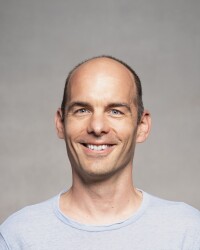Schanda Group
Biomolecular Mechanisms from Integrated NMR Spectroscopy
Life is in motion. While one immediately realizes the inherently dynamic aspect of living organisms on the macroscopic level, simply by observing it by eye or under a microscope, it is clear that ultimately it is the jiggling and wiggling of the atoms within molecules, and their interactions with each other, that allow life to unfold.
The Schanda group is particularly interested in understanding how biomolecules – primarily proteins – perform their tasks, and how their structural dynamics governs their functions. Their work has several aspects. On the one hand, the group studies a number of puzzling biological questions. For example, how do proteins transport other proteins across the cell, across biological membranes or into membranes? By studying how those proteins – chaperones, receptors, translocases – are structured, how they move and how they interact, they decipher how cells are able to transport large and highly aggregation-prone polypeptides all across the cell and ultimately refold them into their native environment. For example, this work unravels how membrane proteins are getting imported into mitochondria, or how megadalton-large chaperones help other proteins to fold.
On the other hand, the group is interested in somewhat more fundamental physio-chemical aspects of protein dynamics. How do the motions around the active site of an enzyme control its function? And how exactly do the side chains and main chain of proteins move – in solution, in crystals, and in large assemblies? How do protein domains move relative to each other, and does the packing in biological assemblies or crystals impact this motion?
To answer these questions, the Schanda group uses nuclear magnetic resonance (NMR) spectroscopy, which they combine with a host of other biophysical, biochemical, in-silico and in-vivo methods. The integration of these methods, and the further development of NMR methodology is another key interest of the group, as they develop, for example, methodologies that allow solving three-dimensional structures of large proteins or protein complexes from novel NMR experiments, coupled to cryo-EM. Other new NMR methods allow to decipher in great detail how particular parts of proteins move, which then allows linking those motions to function.
The group, thus, spans activities from nuclear spin dynamics and biophysics to challenging biological problems.
Team
Current Projects
Mitochondrial import machinery | Dynamics of enzymatic assemblies | New NMR methods to probe protein dynamics | Integration of NMR with various structural techniques for high-resolution structure determination
Publications
Kapoor L, Ruzickova N, Zivadinovic P, Leitner V, Sisak MA, Mweka CN, Dobbelaere JA, Katsaros G, Schanda P. 2025. Quantifying the carbon footprint of conference travel: The case of NMR meetings. Magnetic Resonance. 6(2), 243–256. View
Knödlstorfer S, Toscano G, Ptaszek AL, Kontaxis G, Napoli F, Schneider J, Maier K, Kapitonova A, Lichtenecker RJ, Schanda P, Konrat R. 2025. A novel HMBC-CC-HMQC NMR strategy for methyl assignment using triple-13C-labeled α-ketoisovalerate integrated with UCBShift 2.0. Journal of Molecular Biology., 169465. View
Rohden D, Napoli F, Kapitonova A, Tatman B, Lichtenecker RJ, Schanda P. Arginine dynamics probed by magic-angle spinning NMR with a specific isotope-labeling scheme. Journal of Molecular Biology., 169379. View
Castell SD, Fernandez CM, Tumas IN, Margara LM, Miserendino MC, Ceschin DG, Pezza RJ, Monti MR. 2025. The low-fidelity DNA Pol IV accelerates evolution of pathogenicity genes in Pseudomonas aeruginosa. Communications Biology. 8, 1148. View
Tatman B, Sridharan V, Uttarkabat M, Jaroniec CP, Ernst M, Rovo P, Schanda P. 2025. Bumps on the road: The way to clean relaxation dispersion magic-angle spinning NMR. Journal of the American Chemical Society. 147(32), 29315–29326. View
ReX-Link: Paul Schanda
ORC-ID: 0000-0002-9350-7606
Publons: 1410674/paul-schanda/
Career
Since 2021 – Professor, Institute of Science and Technology Austria (ISTA)
2017 – 2020 Head of the NMR group, Institut de Biologie Structurale (IBS), Grenoble, France
2011 – 2021 Research team leader, IBS Grenoble, France
2008 – 2010 Post-doc, Dept. of Chemistry and Applied Biosciences, ETH Zürich, Switzerland.
2004 – 2007 PhD student, Univ. Joseph Fourier Grenoble (IBS), including research at Weizmann Institute (2005)
Selected Distinctions
2020 Varian Young Investigator Award
2020 ICMRBS Founders’ Medal
2012 ERC StG ProtDyn2Function, 1.5 M€
2010 Young Investigator Award, French Biophysical Society
2008 Post-doc fellowship ‘ETH Fellows’, ETH Zurich (2008)
2004 Boehringer Ingelheim fellowship: competitive and prestigious PhD fellowship
Additional Information
Download CV
Online conference about “Emerging Topics in Biomolecular Magnetic Resonance”
Online conference about “Mechanisms of Molecular Chaperones: Insights from Hybrid Biophysical Approaches (part II)”
Chemistry Colloquia website














